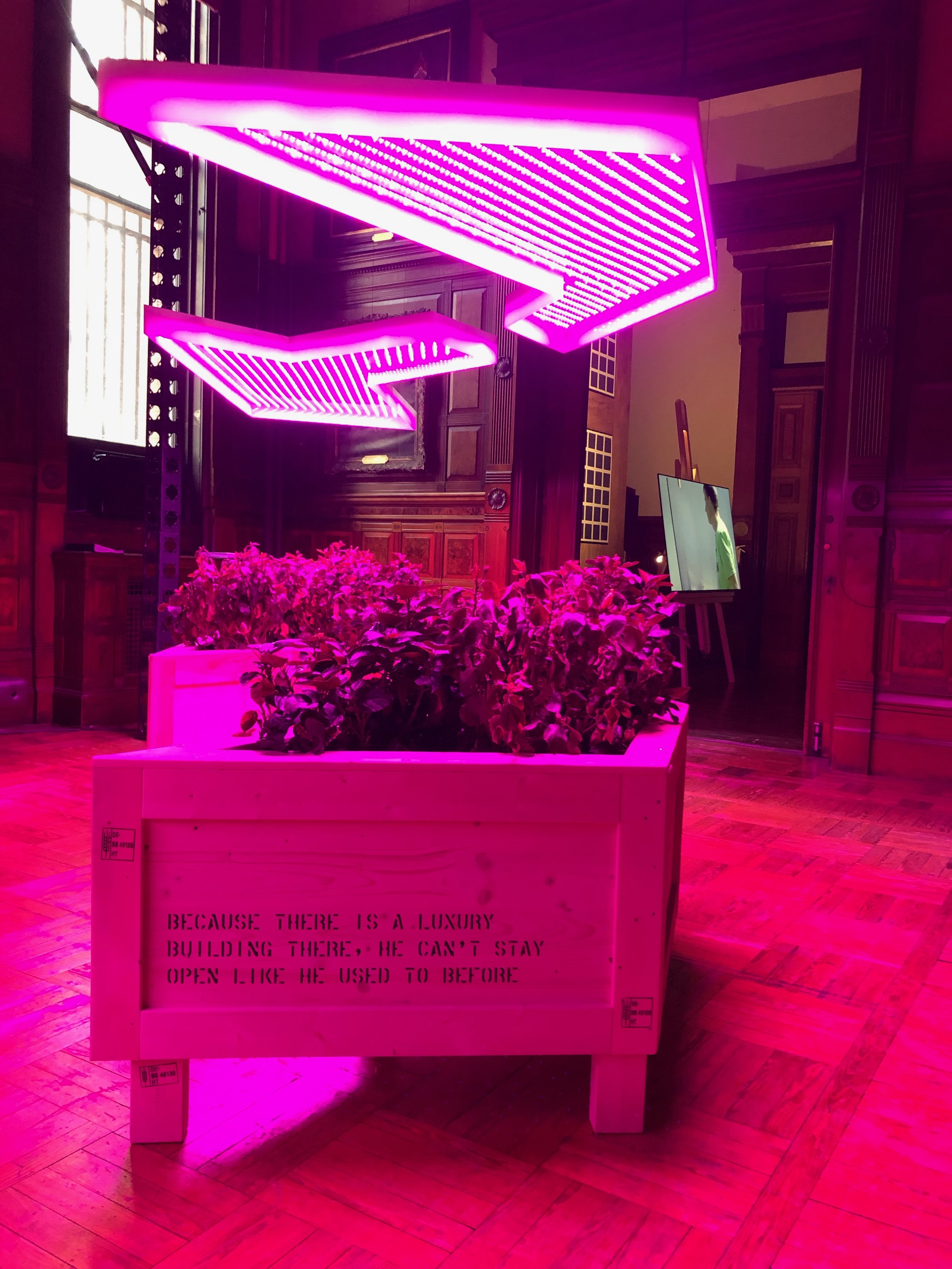Siege of the Museum
Hito Steyerl:DRILL at the Park Avenue Armory
The main attraction of Hito Steyerl’s Drill, a massive multi-video installation that spans the entire first floor of the Park Avenue Armory, can be found in the complex’s enormous drill hall, where the artist has installed a three channel video that interweaves the history of New York’s 7th Regiment––which the Armory once housed––with current events of school shootings and gun violence in America.
A view of the installation in the Armory’s 55,000 square foot drill hall, in which student activists hold a list of schools at which shootings have occured
While the central commission, which mimics the style of a documentary, certainly leaves an impression, its tone is slightly confused. Though it is impossible not to be moved by the teenage gun control advocates who are changing the conversation surrounding gun violence, their impact is weakened by the inclusion of a historian who takes us throughout the armory’s building (sometimes with an unnecessary, heavy flashlight in hand, like a character out of Scooby Doo), whose purpose is to reveal the dark history of the armory through its own connection to gun rights. (The National Rifle Association was founded by some of the 7th regiment’s members.) Her script, however, prescribes 21st-century disdain to a subject that had not yet morphed into the controversy it is today. (In one instance, she describes people manufacturing lead bullets below the drill hall as “servants”––a strange, but pointed turn of phrase). Demonizing a regiment that was one of the first to volunteer in the Civil War, despite its undeniable predilection for luxury, makes a point that, though perhaps valid, belongs in a different history.
One of the founders of the NRA and a member of the 7th Regiment
The comparison between current events and the past is well illustrated, however, by a resident of Sandy Hook, who describes the aftermath of shootings as if “soldiers [were] returning from war.” It is in conflating these histories that this video is successful, as we feel the contradiction in the opulence of the armory along side the horror of the Civil War, a dissonance similar to the innocence of childhood colliding with the trauma of a school shooting.
This dissonance makes another, albeit more heady, appearance on a somewhat smaller screen in a somewhat smaller room nearby, in which a lecture given by Steyerl herself plays in front of a couch constructed of sandbags, the likes of which you might expect to see if under siege. If you listen to Steyerl’s lecture, however, you will find truth in such a possibility, as under siege we may be.
This lecture, titled “Is the Museum a Battlefield?”, was given in 2013 on the occasion of the Istanbul Biennial and describes something the New York art world has been grappling with in recent months, that is, the complicity museums have in their donors’ actions. This debate has come to a head in museums’ rejection of money from the Sackler Family, whose wealth is derived from the pharmaceutical industry and the protest of Whitney Museum trustee Warren B. Kanders, the CEO of Safariland, which manufactures bullets and teargas that have been used at various contentious borders, including between the U.S. and Mexico. It is on Kanders that I would like to focus.
Steyerl at the lectern
Why protesters object to Kanders is fairly straightforward. Kanders makes money off of bullets which are harming innocent people, which, in turn, the museum takes to fund its programming. In “Is the Museum a Battlefield?” Steyerl complicates this simple uni-directional arrow and makes it a tangled web in which the culprit becomes much harder to identify. In an effort to understand the death of a friend by gunfire, she rewinds the bullet’s trajectory, from its fatal landing to the gun that fired it, back to the manufacturer and the money that made its production possible. To her horror, she finds that she herself is on the other side of the gun: her work has been commissioned by grants from the same arms manufacturer which made the gun that killed her friend. Steyerl concludes that bullets do not travel in straight lines, but rather in circles, between the battlefield and the museum and back again.
She does not stop there, however, but also makes note of the software that starchitect Frank Gehry uses to design his buildings (including the headquarters of an arms manufacturer in Germany) is also used by the German military to design army helicopters and how the sponsors of the Istanbul Biennial (at which she is speaking) is a subsidiary of Otokar, another military supply company.
And while we might be tempted to label the conflation of museum and battlefield as a distinctly 21st century problem, most fascinating are the instances Steyerl points out in which the museum has literally become a battlefield, as in the Louvre’s founding in 1792, when French protesters stormed the building in order to transition the royal collections (many objects of which had themselves been looted as the spoils of war) into a collection for the people. In this case, culture itself had become the battleground and the contents of the museum the bullets.
But where does this leave us in the Kanders debate? In typical Steyerl style, we are not given a way out, but are rather pushed deeper into the muck. To rid our institutions of violence, much more than our museum trustees have to go. Like it or not, the museum is under siege. It is what we do next that will decide if it becomes an all out war.
Park Avenue Armory
Until July 21







